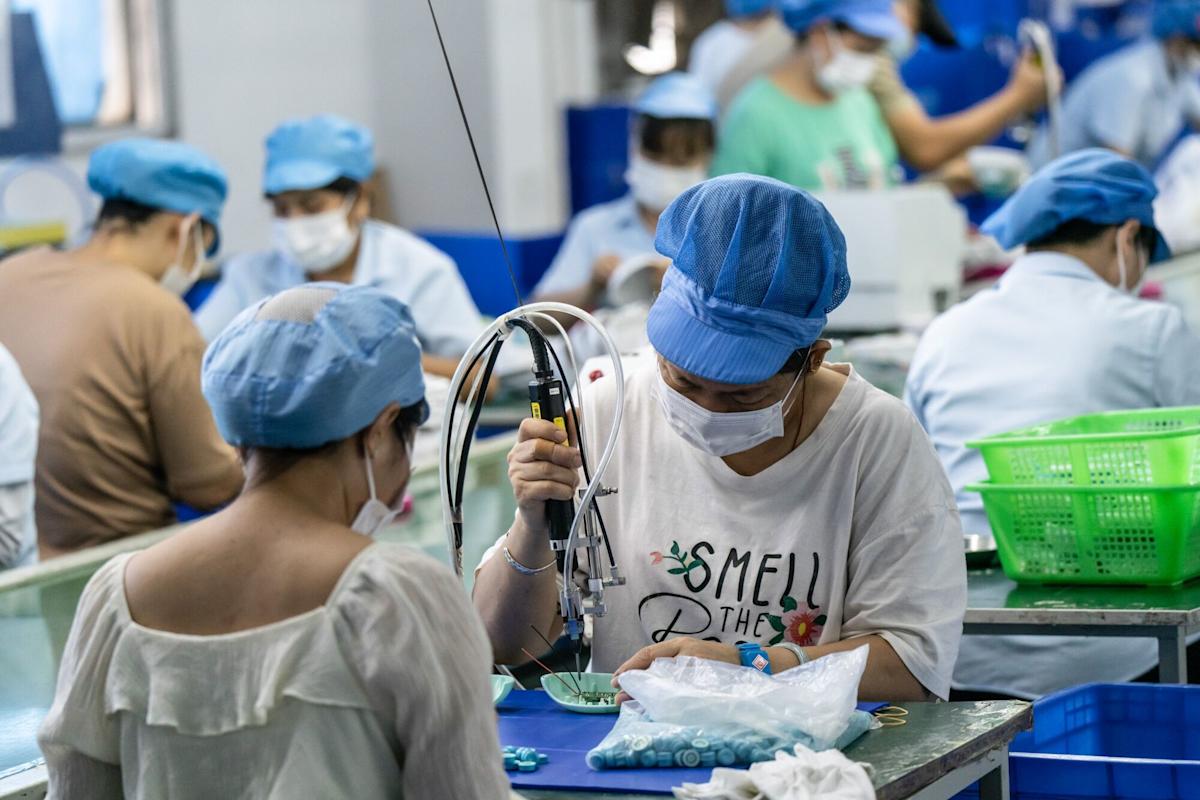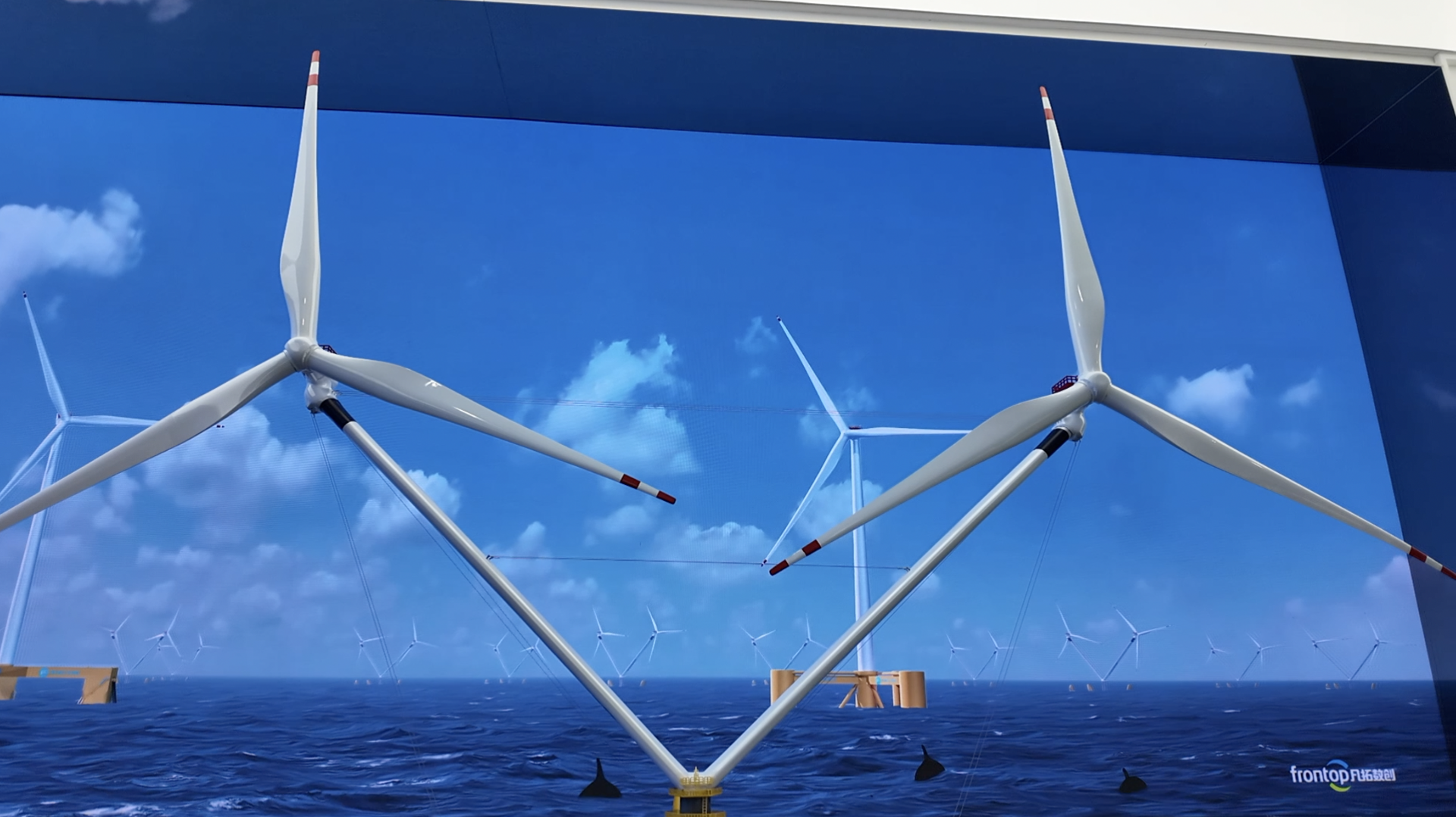(Bloomberg) — China’s economy surprised with signs of improvement even as deflationary pressures persisted and employment weakened, throwing fresh doubt over the likelihood of further monetary stimulus by Beijing in the face of higher US tariffs.
Most Read from Bloomberg
Factory activity and construction had their strongest month of the second quarter in June, according to China’s official purchasing managers’ indexes released on Monday. The official manufacturing PMI remained in contraction but reached 49.7 from 49.5 in May — exceeding forecasts along with a measure of construction and services.
Yet behind the headline figures was a more mixed picture of the world’s second-biggest economy that left the market unsure of if and when policymakers might step up stimulus efforts. Traders dialed back bets on further monetary easing after the data release, with futures on 30-year government bonds falling as much as 0.6% — the most in a month.
“Overall, the better PMI data point to still decent momentum in the second quarter,” said Michelle Lam, Greater China economist at Societe Generale SA. “But the weak employment indices put the sustainability of consumption recovery in doubt without more support later in the year.”
A tariff truce with the US has led to a rebound in trade, contributing to a broad improvement in new orders for factories, builders and service providers. The latest PMI reading captured the first full month after Beijing and Washington agreed to a 90-day pause in their trade war.
At the same time, sales prices are continuing to drop despite narrowing their decline across the sectors. What’s more, manufacturing employment weakened, illustrating the weakness of domestic demand and the vulnerabilities still lurking in the labor market.
What Bloomberg Economics Says …
“Further employment shrinkage and the weakest confidence since the government’s growth pivot last September highlight the lack of confidence beyond the immediate future. That’s likely due to the mid-August expiration of the China-US trade truce. The government has continued to support the economy, as seen the acceleration in construction, but may hold back fresh stimulus until the latter part of 3Q.”
— Chang Shu and David Qu. Click here to read the full report.
With the People’s Bank of China issuing a more optimistic assessment of the economy after its latest policy meeting, analysts are debating whether authorities will roll out fresh measures in support of growth in the coming three months. Some argue the urgency has decreased in the near term, as the pace of expansion stays on track to hit the official target of around 5% in the second quarter.
Among factories, the new orders index expanded for the first time in three months, though a gauge of employment worsened again after a slight improvement in May. Among the 21 industries surveyed, more than half were in expansion territory, according to the National Bureau of Statistics.
The Chinese economy has held up well over the past three months as it went through a rollercoaster ride of erratic decisions by President Donald Trump, who would hike tariffs only to have them suspended later.
Exports kept growing, however, as overseas clients front-loaded orders, while a government subsidy program for consumer products pushed retail sales growth to the fastest since 2023. The Chinese government’s earlier issuance of bonds this year also supported robust infrastructure investment and construction.
Persistent deflation and weak consumer demand have shadowed the economy throughout the trade war. Property prices are struggling to bottom out, weighing on household wealth and confidence.
The economic cross-currents are likely to complicate policymaking in the months ahead.
The PBOC highlighted the recent improvement in its statement on Friday while also drawing attention to problems including insufficient demand and low consumer prices.
The central bank vowed to use a flexible approach when deciding the pace of policies. It last cut interest rates and the reserve requirement ratio — which determines the amount of cash banks must set in reserves — in May.
“The economy shows a positive trend, and social confidence continues to increase,” the PBOC said.
The central bank’s view indicates “a less dovish tone” compared with the previous quarterly meeting and “signals limited appetite for significant easing in the near term,” Goldman Sachs Group Inc. economists wrote in a note on Saturday.
They expect a 10-basis point policy rate cut and a reduction of half a percentage point in the RRR during the fourth quarter, when they anticipate a significant slowdown in economic growth.
Others argue that the PBOC may ease monetary policy as soon as next quarter in order to ensure the economy stays on the right track.
“Policymakers might recognize that to sustain the growth momentum and counter subdued price levels, some modest easing might be needed,” said Jacqueline Rong, chief China economist at BNP Paribas, who expects the PBOC to cut the policy rate by 10 basis points in August.
Societe Generale’s Lam sees a possible window for additional stimulus in late third quarter, though it could be delayed to the subsequent three months.
Apart from monetary easing, China could also make use of policy banks to inject new money for infrastructure. Authorities planned to let them raise 500 billion yuan ($70 billion) of capital to buy stakes in infrastructure projects, Bloomberg News reported in May.
Additional fiscal stimulus is another possibility, though its shape is even less clear and will likely require a significant slowdown in growth.
Economists at Morgan Stanley said Beijing may introduce “a modest” supplementary fiscal infusion of up to 1 trillion yuan in the late third quarter or the start of the last three months of the year, “when it sees two-three months of weaker hard data.”
The strength of Chinese manufacturing in the rest of the year also remains in question given an unpredictable outlook for exports, with a more lasting trade deal still elusive.
Economists surveyed by Bloomberg expect gross domestic product to expand 4.5% this year, significantly below the official target of around 5%.
“The questions for policymakers are deflation and joblessness instead of growth,” said Raymond Yeung, chief economist for Greater China at Australia & New Zealand Banking Group Ltd. . “I am not worried about China’s GDP.”
–With assistance from James Mayger and Wenjin Lv.
(Updates throughouot.)
Most Read from Bloomberg Businessweek
©2025 Bloomberg L.P.


